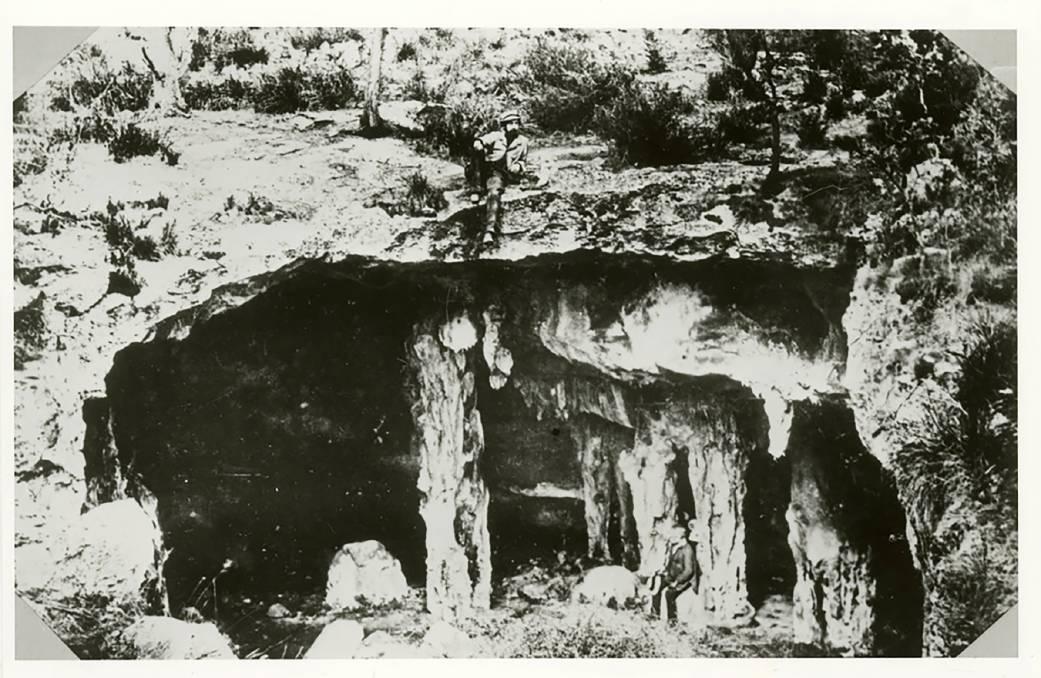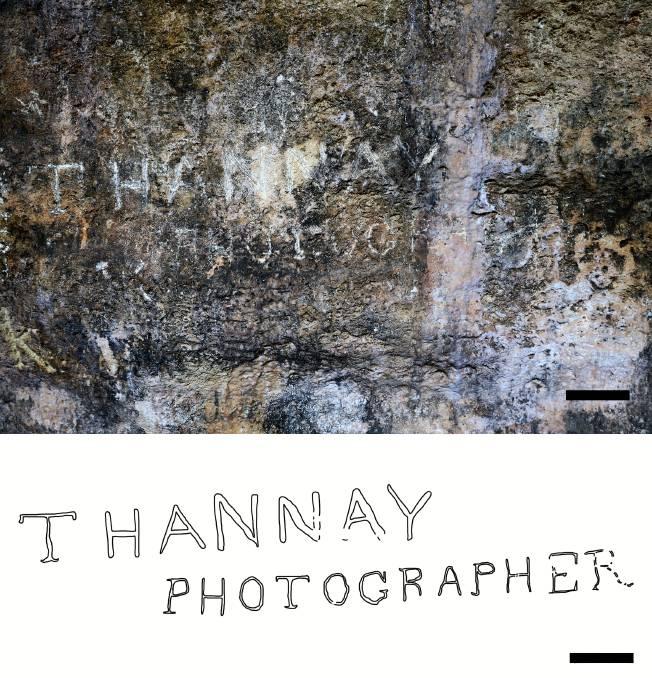Palaeontologist identifies ‘mystery photographer’ of the Naracoorte Caves
Scientists have emphasised the importance of historical writing in caves, after proving the identity of the first person to photograph Australian caves more than 150 years ago.
The 1860 photographs of Blanche Cave at Naracoorte are the first Australian photographs to feature a cave. They are also some of the first photographs in the world to show a cave entrance.

Blanche Cave, 1860, second roof window entrance. Julian Tenison-Woods seated above cave.
Photographer: Thomas Hannay. State Library of South Australia, B36858.
The identity of the photographer was unknown until recent years, when palaeontologist Dr Liz Reed from the School of Physical Sciences discovered an engraving in a Melbourne periodical that cited Thomas Hannay of Maldon as the producer of the photograph.
Despite that discovery, there was still no physical evidence linking the itinerant photographer to the caves.
However, in May 2018, Dr Reed discovered an inscription on the wall of Blanche Cave that can be attributed to Thomas Hannay. The signature is adjacent to the area shown in the 1860 photographs and provides evidence of his visit to the caves.

The Thomas Hannay inscription on the cave wall in Blanche Cave (above) and an outline of the inscription (below). Scale bars are 10 cm.
Discovery emphasises the importance of historical writing in caves
Dr Reed’s findings published in the journal Helictite emphasised the importance of historical writing in caves.
“Historical writing in caves serves as primary evidence for historians and should be considered important cultural heritage,” Dr Reed and co-author Steven Bourne wrote in the paper.
“We suggest graffiti removal is largely inappropriate in soft limestones such as at Naracoorte as the conservation benefits of leaving surfaces intact outweigh the aesthetic reasons for removal.
“If cave cleaning is to be conducted it should be done only after thorough documentation of the area and justification for restoration is considered.”
Naracoorte Caves National Park in South Australia is a UNESCO World Heritage site renowned for its Quaternary vertebrate fossil record spanning the past 500,000 years.
